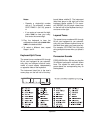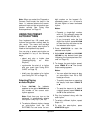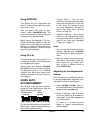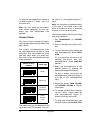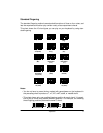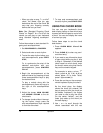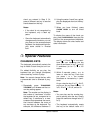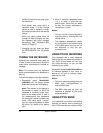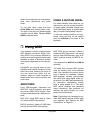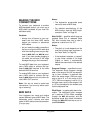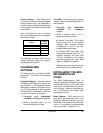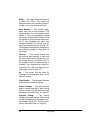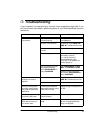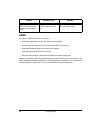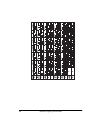
21Using MIDI
effects for sounds such as a saxophone,
other reed instruments, and guitar
tones.
To use pitch bend, rotate and hold
PITCH BEND
while holding down a key.
The pitch of the key you pressed slides
smoothly up and down. Release
PITCH
BEND
to stop the effect.
USING A SUSTAIN PEDAL
For added flexibility and control as you
make music, you can connect an option-
al sustain pedal (available through your
local RadioShack store). A sustain pedal
lets you sustain the keyboard’s sound.
To connect a sustain pedal to your key-
board, insert the plug on the pedal’s
cord into
SUSTAIN
on the back of the
keyboard.
Usin
g
MIDI
Your keyboard includes a feature called
MIDI (Musical Instrument Digital Inter-
face). MIDI is the universal standard for
sending and receiving performance data
between all types of electronic musical
instruments, regardless of the manufac-
turer.
Using MIDI, you can play music on your
keyboard and another instrument at the
same time while pressing the keys on
only one, record your music to a se-
quencer, acquire a wider selection of
preset tones from a sound module, and
much more.
ABOUT MIDI
Every MIDI-equipped instrument has
MIDI OUT and IN terminals, and some
also have a MIDI THRU terminal. Each
of these terminals serves a different pur-
pose.
MIDI OUT sends MIDI data to (“talks
to”) the other MIDI instrument(s).
MIDI IN receives (“listens to”) MIDI data
sent by the other MIDI instrument(s).
MIDI THRU lets you connect (“network”)
additional MIDI instruments, and sends
along to other MIDI devices a copy of all
data it receives through its MIDI IN ter-
minal.
Your keyboard has
MIDI
OUT
and
MIDI IN
terminals.
The cable that connects MIDI devices
does not actually carry sound between
them, like a speaker wire carries sound
from a receiver to a speaker. Instead,
MIDI-equipped devices communicate
with each other using digital codes (in-
structions). One MIDI device sends digi-
tal instructions representing exactly
what is being played on it. The other
MIDI device receives and translates
those instructions, then produces (or
records) the sound exactly as it was
played on the first device.
Note:
Connecting your keyboard to an-
other MIDI device requires a MIDI cable
(not supplied). See “Making the MIDI
Connections” on Page 22.



